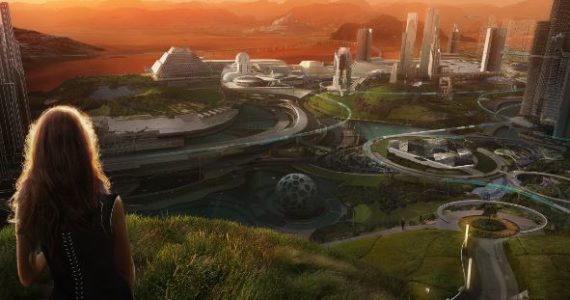Mars
Mars was next 'Great Colony' of humanity and was the first planet to be both extensively Terraformed and colonised for long term habitation. While never intended or seen as a second Earth, it was clear that the colonisation of Mars was a huge leap forward for humanity. From the initial permanent colonist expeditions to large scale colonist transfers, Mars quickly grew into a booming civilisation in its own right and in an unprecedented length of time. Lacking the variety of environments and climates on Earth, Mars is largely similar across the planet and equally desolate and barn, except for the poles.
Geography
A largely barren planet with a red dusty sand-like texture coving the vast majority of the planet. With deep ravines, caverns and mountain ranges, altitude plays the same effects as it does on earth regarding temperature, atmospheric pressures and wind. Mars lacks a natural atmosphere and life is largely limited to the vast biodomes across its surface that act as both city and city-states in their own right. On the surface, mining and manufacture make up the substantial economic outputs of the planet with its sizable capabilities being the envy of the solar system, supplying all manner of goods and materials across the Solar System and beyond at highly competitive prices.
Natural Resources
Mars is rich in Iron Ore reserves and various metals in forms found more readily and freely than in other regions in the Solar System. Mars' surface, crust and mantle are considerably thinner than on Earth so mines and excavation can go many many miles deeper than anything on Earth and the age of the planet means the planet itself, whilst not dead, is certainly considerably older than earth and increased mining is gradually following out the planet, increasing concerns on the planet and giving cause to any number of environmental groups and activist on the planet.
Water was of primary concern on the planet and lacking this in abundance, the planets poles are of vital importance to the planets sustainment. Some of the earliest and most extensive construction projects on Mars centred around the poles of the planet. With the far colder average temperatures, liquid water is either frozen or lies deep underground. The management and control of water fell under the military until such time it was brought under control and handed over to civilian jurisdiction. Even now it remains one of the oldest established companies and institutions on the planet, holding considerable political and economic clout.
Oxygen managed through vast oxygen processing plants that pump it into the planetary biodomes. Constantly recycled, the air is noticeably stale for months on end until new filters and tanks are rotated after shipments from off-world. The Populus can have a fresh respite for about a week or so.
Water was of primary concern on the planet and lacking this in abundance, the planets poles are of vital importance to the planets sustainment. Some of the earliest and most extensive construction projects on Mars centred around the poles of the planet. With the far colder average temperatures, liquid water is either frozen or lies deep underground. The management and control of water fell under the military until such time it was brought under control and handed over to civilian jurisdiction. Even now it remains one of the oldest established companies and institutions on the planet, holding considerable political and economic clout.
Oxygen managed through vast oxygen processing plants that pump it into the planetary biodomes. Constantly recycled, the air is noticeably stale for months on end until new filters and tanks are rotated after shipments from off-world. The Populus can have a fresh respite for about a week or so.
History
After first colonisation, Mars' population grew very quickly and soon, news reports about the first 'Natural Martians' born on the world quickly faded into obscurity and the planet became its own, developing its own culture, identity and truly forging its way among the Solar System both economically and politically.
Alternative Name(s)
Mars
The Red Planet
Type
Planet
Remove these ads. Join the Worldbuilders Guild









Comments